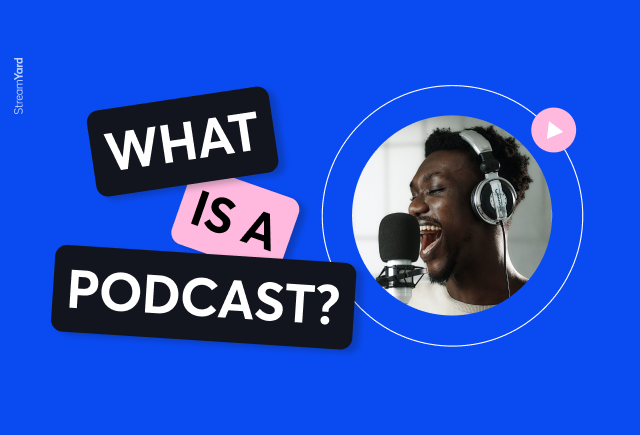
Three out of four people in the U.S. are familiar with the term “podcasting”, according to Nielsen, which is thought to be a combination of the words “iPod” and “broadcast”. But familiarity and understanding are not the same.
So, what is a podcast, exactly? Foundationally, a podcast is a type of consumable digital media, usually with a targeted focus and audience.
Defining a podcast is one thing, but the real excitement comes from realizing how it can be leveraged to benefit you or your brand.
Did you know that there’s roughly 1 blog for every 7.8 people in this world but only 1 podcast for every 1,857 people?
Podcasts as a medium hold so much untapped potential. So, let’s uncover more about what podcasts are and how they work.
Podcasts are a type of digital media that rely on audio/visual communication to relay information.
Here are three key elements that make podcasts unique:
Some have described podcasts as “the streaming generation’s answer to radio”.
So, how does a podcast work? On a technical level, the podcaster, or content creator:
What no textbook definition of a podcast will tell you is how they manage to capture the attention of viewers and listeners so easily.
Noelle Acheson puts it best in this powerful analysis: “Podcasts fill in the gaps in your days with intimacy.” Similarly to how FDR’s “fireside chats” brought a grieving nation together in WWII by connecting listener and broadcaster, podcasts can bring podcaster and viewer/streamer together intimately in a way that other digital mediums of communication simply can’t.
Creating a podcast is fairly involved, but once you’ve decided on what you’re going to say and set up your hosting platform, releasing content becomes second nature.
On a high level, here’s what’s involved:
What good is the best podcast content if it’s not heard or watched by the right people? Not much!
The aim of podcast distribution is to get eyes and ears on your content.
The easiest way to distribute your podcast is to choose an all-inclusive podcast hosting platform carefully.
Podcasting is a growing, but potentially still less competitive form of reaching your audience than other forms of digital marketing.
But that doesn’t mean being seen won’t involve doing work. This is the work of podcast marketing, which aims to help podcast streamers not just launch into the podcast space, but also make their unique mark and grow their audience.
Here’s how to do that:
As is the case with any form of digital marketing, reviewing the performance of your podcast regularly, analyzing what you find, and adjusting accordingly is extremely important.
That’s because, when it comes to tracking podcast performance, “Every play, pause, and skip tells a story, so learning how to measure podcast performance is essential.”
Lorem ipsum viverra feugiat. Pellen tesque libero ut justo, ultrices in ligula. Semper at. Lorem ipsum dolor sit amet elit. Non quae, fugiat nihil ad. Lorem ipsum dolor sit amet. Lorem ipsum init dolor sit, amet elit. Dolor ipsum non velit, culpa! elit ut et.
Lorem ipsum dolor sit amet elit. Velit beatae rem ullam dolore nisi esse quasi, sit amet. Lorem ipsum dolor sit amet elit.